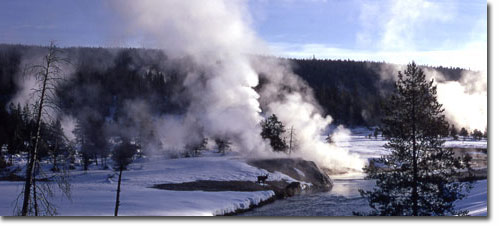Certainly this story is about Colorado and neither Oregon nor South Dakota; still, it makes a person wonder.
Here’s the link and below is an excerpt.
If wildlife acres burned double in the next 50 years, how can birds that live in burnt trees be on a bad trajectory in terms of habitat? Could someone in the legal business explain the logic path.. facts found, conclusions drawn, how that relates to the ESA regulations to make the FWS go spend bucks (I wonder if they track how many?) to assess this situation when Interior can’t afford to plow the roads to Yellowstone Park?
The hotter, drier climate will transform Rocky Mountain forests, unleashing wider wildfires and insect attacks, federal scientists warn in a report for Congress and the White House.
The U.S. Forest Service scientists project that, by 2050, the area burned each year by increasingly severe wildfires will at least double, to around 20 million acres nationwide.
Some regions, including western Colorado, are expected to face up to a fivefold increase in acres burned if climate change continues on the current trajectory.
Floods, droughts and heat waves, driven by changing weather patterns, also are expected to spur bug infestations of the sort seen across 4 million acres of Colorado pine forests.
“We’re going to have to figure out some more effective and efficient ways for adapting rather than just pouring more and more resources and money at it,” Forest Service climate change advisor Dave Cleaves said.
“We’re going to have to have a lot more partnerships with states and communities to look at fires and forest health problems.”
The Forest Service scientists this week attended a “National Adaptation” forum in Denver, where experts explored responses to climate change. They’ve synthesized 25 years of federal climate science as part of the National Climate Assessment — now being finalized for the president and Congress — as the basis for navigating changes.
Degradation of city watersheds is anticipated along with diminished cleansing capacity of forests. Forests today absorb an estimated 13 percent of U.S. carbon pollution.
New data shows bug attacks are already broadening. In Colorado, insects target trees at higher elevations, such as white-bark pines found in wilderness areas, said David Peterson, a Forest Service research biologist who co-wrote the 265-page report.
This was also interesting..
Some Western governors took the climate change warning as confirmation of current trends and called for federal help creating new forest projects industries.
Fires and insect attacks “are only going to get even worse,” Montana Gov. Steve Bullock said Wednesday. “We need a real federal commitment to managing our forests in a way that will prepare and protect our communities, protect and enhance wildlife habitat and protect our water for drinking, irrigation and fishing.”




